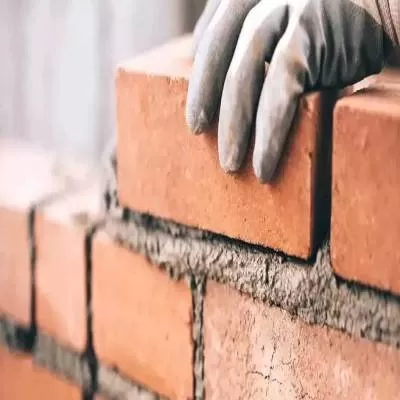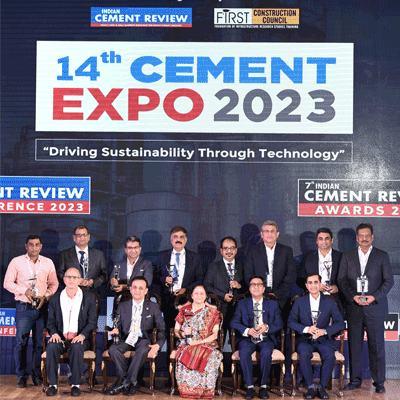- Home
- Building Material
- Cement
- The Wish List
The Wish List
What is the industry looking for in Budget 2011-12? FIRST Infocentre collates key recommendations and concerns.
As the process of formulating Budget 2011-12 began in right earnest, the Finance Ministry held Pre-Budget consultations with industry stalwarts and associations to get inputs and understand ground realities. However, the initial belief is that the ministry has little room to manoeuvre tax rates and they are likely to remain at current levels. Nevertheless, duties on certain commodities that have seen a price rise could be lowered. Not fiddling with the revenues stems from the concern that the Finance Ministry was targeting a 4.8 per cent fiscal deficit. And any loss on revenue front would hamper this target. While the ministry had already begun working on the Budget with the expenditure department finalising spending estimates by government ministries, Finance Minister Pranab Mukherjee met industry captains, economists and chambers including the Confederation of Indian Industry, FICCI, Assocham and other associations in the first three weeks of January. The following were the key recommendations put forth by the industry during these meetings.
ASSOCHAM
Confederation of Indian Industry
- The fiscal deficit must be reduced by augmenting revenues on the one hand and rationalising expenditure on the other. It recommended reducing fiscal deficit to 4.8 per cent of GDP in FY2012 from the budgeted level of 5.5 per cent in the current year.
- In view of tight liquidity in the banking system and rising interest rates, which have started adversely impacting capital formation, the Budget should have a balanced approach: revenue raising measures need to be balanced against incentives to industry.
- To augment revenues next fiscal, Rs 50,000 crore can be raised through disinvestment and another Rs 50,000 crore though facilitating the settlement of funds locked up in disputes and litigations. While tax collection can be improved without increasing the rates, the base of services tax can be expanded to include all services like railway fares and freights with only a small negative list, and widening the tax net to include a large part of the informal sector.
- The government should reduce subsidies and interest payments, which together account for over 57 per cent of non-plan expenditure. This is possible by cutting down food and fertiliser subsidies and decontrolling petroleum products.
- On indirect taxes, the 10 per cent rate of customs duty should be continued; any reduction at this juncture would be counterproductive as many countries continue to face low levels of growth and a surge in imports could mar the recovery prospects of domestic industry. However, anomalies in customs duty owing to inverted duty structure in the case of ferro vanadium, glycerine, soaps and tyres should be removed. Also, customs duty on non-coking coal, petroleum coke, scrap of copper, zinc and lead, ferro-nickel and waste and scrap of paper needs to be reduced from 5 per cent to nil.
- Excise duty on cement should be rationalised with abatement on retail sale price. Cement has a complex excise duty structure with specific as well as advolarem duty and it is the only the product on which excise duty is levied on MRP without allowing abatement.
- The Central Sales Tax rate should be reduced from 2 per cent to nil in view of the likely delay in implementation of GST.
- The surcharge and cess on corporate taxation should be abolished and MAT should be reduced from 18 per cent to 10 per cent.
- The deprecation rate on plant and machinery should be increased from 15 per cent to 25 per cent.
FICCI
- The government should refrain from rolling back the stimulus package provided to industry in view of the threat of double-dip recession in advanced countries.
- The rates of excise, customs and service tax should be retained at the existing level.
Industrialists
- Close to 18 CEOs and MDs demanded retention of the stimulus package, customs duty at 10 per cent and the reduction of the corporate tax rate to 25 per cent.
- Other suggestions include the need to incentivise employment generation, abolition of surcharges and education cess, moderation of the corporate tax rate, removal of the cascading impact of Dividend Distribution Tax, rationalisation of MAT as a specified percentage, and reduction in the CST rate from 2 per cent to 1 per cent.
- A section of industrialists wanted restoration of the withholding tax exemption on interest payable on foreign commercial borrowings and tax exemption of interest income of an infrastructure capital fund and an infrastructure capital company. The rationale was to restore exemptions to reduce the cost of borrowings both from within and outside, and help raise long-term funds at competitive rates for the critical infrastructure sectors.
Cement industry
- The Value-Added Tax (VAT) on cement should be brought on par with other building materials like steel and scrap import duty on coal, pet coke, gypsum and other fuels. While steel attracts 4 per cent VAT, for cement it is as high as 12.5 per cent. As both materials are used for construction, cement should be given a level playing field.
- Total government levies and taxes on cement constitute 60 per cent or more of the ex-factory price - far higher than most countries in the Asia-Pacific Region where the taxes average about 11.4 per cent, with the highest levy of 20 per cent being in Sri Lanka.
- The industry should be granted ‘declared goods’ status like steel, which would enable the sector to reduce expenditure on taxes.
- Construction
- Update
- Portal
- Magazine
- February
- 2011
- World
- India
- Budget 2011-12
- FIRST Infocentre
- Pre-Budget consultations
- fiscal deficit
- revenue
- Pranab Mukherjee
- Confederation of Indian Industry
- FICCI
- Assocham
- GST
- Central Sales Tax
- Service tax
- investment
- infrastructure
- GDP
- tax collection
- Excise duty
- customs duty
- Cement
- MAT
- VAT
- Sri Lanka
- Government
What is the industry looking for in Budget 2011-12? FIRST Infocentre collates key recommendations and concerns. As the process of formulating Budget 2011-12 began in right earnest, the Finance Ministry held Pre-Budget consultations with industry stalwarts and associations to get inputs and understand ground realities. However, the initial belief is that the ministry has little room to manoeuvre tax rates and they are likely to remain at current levels. Nevertheless, duties on certain commodities that have seen a price rise could be lowered. Not fiddling with the revenues stems from the concern that the Finance Ministry was targeting a 4.8 per cent fiscal deficit. And any loss on revenue front would hamper this target. While the ministry had already begun working on the Budget with the expenditure department finalising spending estimates by government ministries, Finance Minister Pranab Mukherjee met industry captains, economists and chambers including the Confederation of Indian Industry, FICCI, Assocham and other associations in the first three weeks of January. The following were the key recommendations put forth by the industry during these meetings. ASSOCHAM Goods and Service Tax (GST) should be introduced to replace multiple indirect taxes, by which trade and industry would effectively compete in the international market. All present taxes on goods and services, including electricity duty, tax on natural gas, sugar and textiles, should be merged into GST. The Central Sales Tax rate should be reduced from 2 per cent to 1 per cent from April 1, 2010 as agreed by the government and Empowered Committee earlier. Service tax should be levied on all services except those in the negative list as per the proposed GST. The stimulus package announced by the government in December 2009 should not be suddenly withdrawn but be gradually phased out as the industry is just coming out of the recession and the inflation rate has already increased significantly in December 2010. Investment in infrastructure projects should be promoted as there is an urgent need to upgrade the country's physical infrastructure to maintain the current growth rate. In order to make such a large investment viable and attractive, the government should either zero rate the tax on input goods and services used during the investment phase or allow such taxes to be accumulated and set off against output tax liability of the investor, like what is now available to exporters. Confederation of Indian Industry The fiscal deficit must be reduced by augmenting revenues on the one hand and rationalising expenditure on the other. It recommended reducing fiscal deficit to 4.8 per cent of GDP in FY2012 from the budgeted level of 5.5 per cent in the current year. In view of tight liquidity in the banking system and rising interest rates, which have started adversely impacting capital formation, the Budget should have a balanced approach: revenue raising measures need to be balanced against incentives to industry. To augment revenues next fiscal, Rs 50,000 crore can be raised through disinvestment and another Rs 50,000 crore though facilitating the settlement of funds locked up in disputes and litigations. While tax collection can be improved without increasing the rates, the base of services tax can be expanded to include all services like railway fares and freights with only a small negative list, and widening the tax net to include a large part of the informal sector. The government should reduce subsidies and interest payments, which together account for over 57 per cent of non-plan expenditure. This is possible by cutting down food and fertiliser subsidies and decontrolling petroleum products. On indirect taxes, the 10 per cent rate of customs duty should be continued; any reduction at this juncture would be counterproductive as many countries continue to face low levels of growth and a surge in imports could mar the recovery prospects of domestic industry. However, anomalies in customs duty owing to inverted duty structure in the case of ferro vanadium, glycerine, soaps and tyres should be removed. Also, customs duty on non-coking coal, petroleum coke, scrap of copper, zinc and lead, ferro-nickel and waste and scrap of paper needs to be reduced from 5 per cent to nil. Excise duty on cement should be rationalised with abatement on retail sale price. Cement has a complex excise duty structure with specific as well as advolarem duty and it is the only the product on which excise duty is levied on MRP without allowing abatement. The Central Sales Tax rate should be reduced from 2 per cent to nil in view of the likely delay in implementation of GST. The surcharge and cess on corporate taxation should be abolished and MAT should be reduced from 18 per cent to 10 per cent. The deprecation rate on plant and machinery should be increased from 15 per cent to 25 per cent. FICCI The government should refrain from rolling back the stimulus package provided to industry in view of the threat of double-dip recession in advanced countries. The rates of excise, customs and service tax should be retained at the existing level. Industrialists Close to 18 CEOs and MDs demanded retention of the stimulus package, customs duty at 10 per cent and the reduction of the corporate tax rate to 25 per cent. Other suggestions include the need to incentivise employment generation, abolition of surcharges and education cess, moderation of the corporate tax rate, removal of the cascading impact of Dividend Distribution Tax, rationalisation of MAT as a specified percentage, and reduction in the CST rate from 2 per cent to 1 per cent. A section of industrialists wanted restoration of the withholding tax exemption on interest payable on foreign commercial borrowings and tax exemption of interest income of an infrastructure capital fund and an infrastructure capital company. The rationale was to restore exemptions to reduce the cost of borrowings both from within and outside, and help raise long-term funds at competitive rates for the critical infrastructure sectors. Cement industry The Value-Added Tax (VAT) on cement should be brought on par with other building materials like steel and scrap import duty on coal, pet coke, gypsum and other fuels. While steel attracts 4 per cent VAT, for cement it is as high as 12.5 per cent. As both materials are used for construction, cement should be given a level playing field. Total government levies and taxes on cement constitute 60 per cent or more of the ex-factory price - far higher than most countries in the Asia-Pacific Region where the taxes average about 11.4 per cent, with the highest levy of 20 per cent being in Sri Lanka. The industry should be granted ‘declared goods’ status like steel, which would enable the sector to reduce expenditure on taxes.























